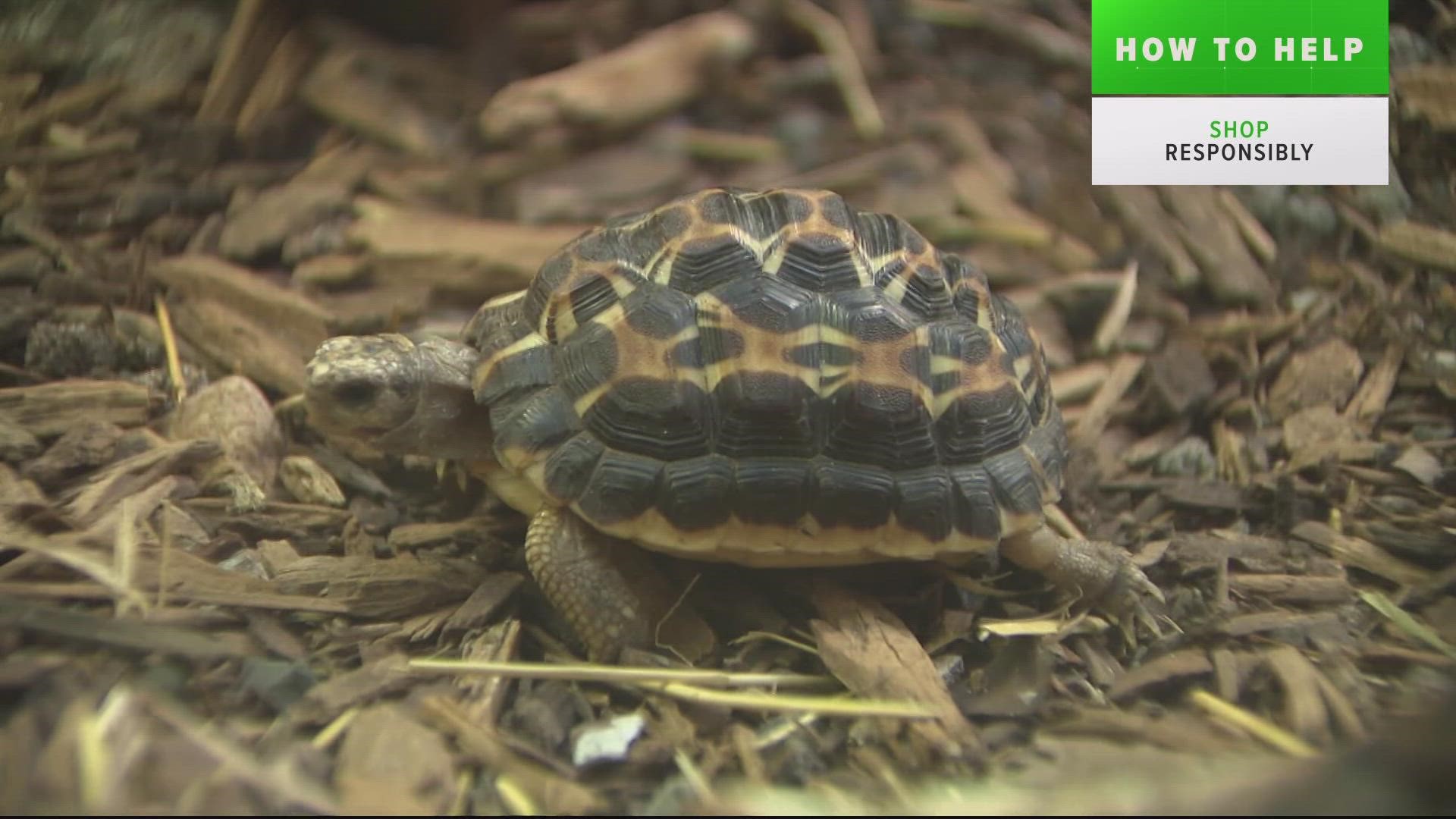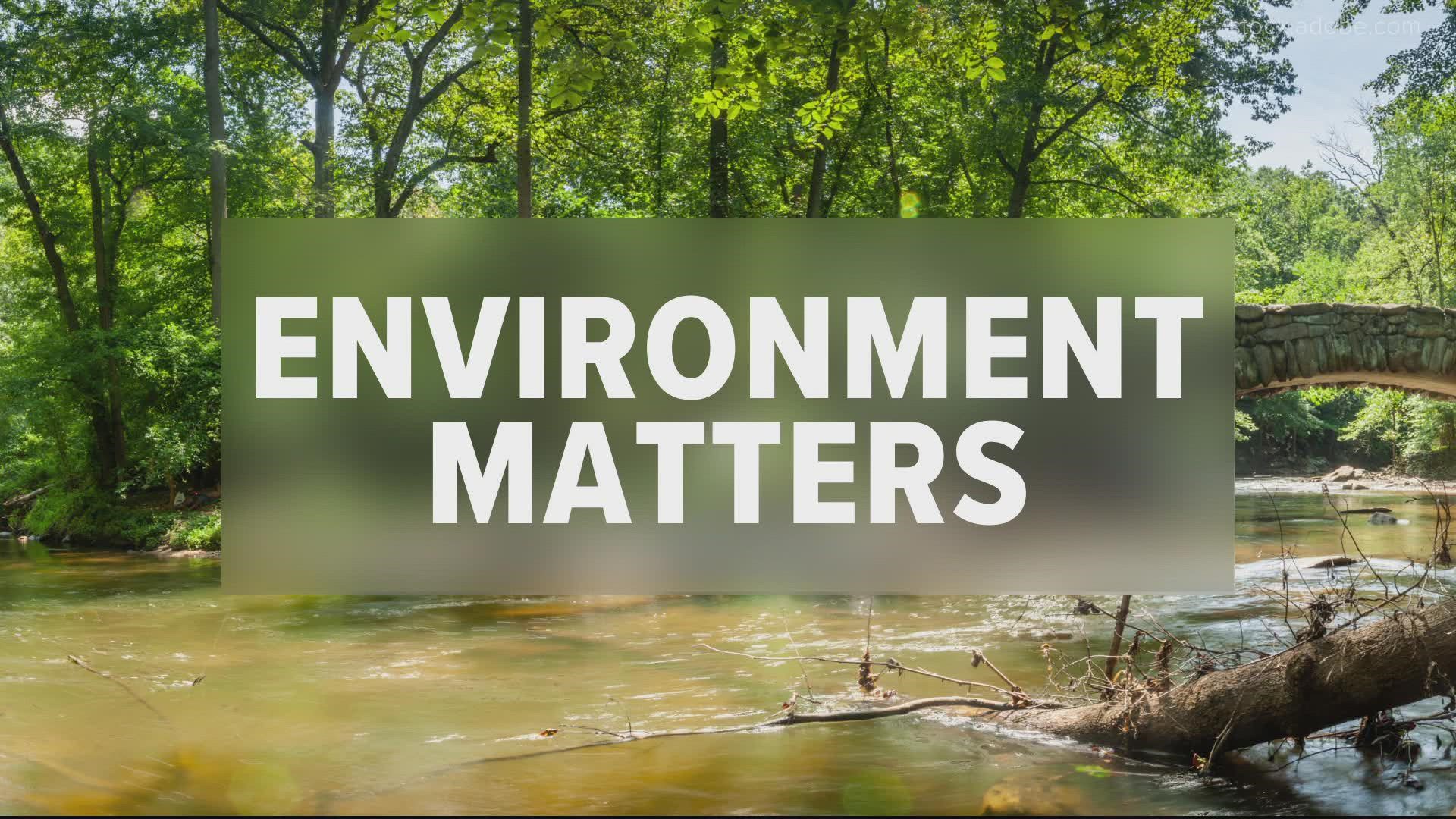WASHINGTON — The International Union for Conservation of Nature estimates about 40,000 of the world’s species are considered to be in danger of going extinct. WUSA9 met a few animals whose species are endangered at the Smithsonian National Zoo and talked to the experts who know them best, to learn more about the creatures and how you can help them.
THE QUESTION
What can we do to help endangered species?
THE SOURCES
Staff at the Smithsonian National Zoo:
- Mimi Nowlin, animal keeper at the Small Mammal House
- Matt Evans, assistant curator of the Reptile Discovery Center
- Brian Gratwicke, research biologist
- Thomas Wippenback, animal keeper at Amazonia
- Becky Malinsky, curator of Primates
WHAT WE FOUND:
“Conservation doesn’t just help one species, it can often help many, including humans," said Becky Malinsky, curator of Primates.
Here are the tips from the staff at the Smithsonian National Zoo.
Shop responsibly.
DON’T BUY WILD
Spider tortoises are like “ambassador animals” at the Reptile Discovery Center, teaching visitors more about them and other endangered species around the Zoo.
“We try to figure out ways we can actually get visitors up close and see these guys,” said Matt Evans, assistant curator of the Reptile Discovery Center. “These tortoises have very small home ranges in the wild,” he added, “like two to three square feet.”
Their similarly-sized enclosure at the RDC protects them from one of their main threats: the illegal animal trade.
“You want to make sure anything that you’re getting is not coming from the wild,” said Evans. That includes pets as well as items made with wild animals’ shells, scales, and feathers.
Look for sustainably harvested products
You could also be buying products harmful to animals and not even know it, said Malinsky.
“It’s hard to look at an orangutan and not see similarities between them and us,” she said from below the “O-Line,” the series of towers and cables connecting the orangutan habitats. “It gives them a lot of choice and control over their environment, just like they would have if they were in the wild.”
Though, because of destruction in their natural habitats, it’s estimated just 100 to 130-thousand live in nature. Harvesting palm oil often found in beauty, food, and cleaning products devastates orangutans' home forests.
“One thing that we do here at the zoo is encourage consumers to read labels before they purchase items, and to try to purchase items that contain sustainable palm oil,” she said.
Deforestation is a major threat to the golden-headed lion tamarin, too.
“It’s really important to source your materials that you’re buying sustainably and support sustainable agriculture," said Mimi Nowlin, animal keeper at the Small Mammal House.
Minimize your environmental impact
Reduce, reuse, recycle—what’s good for the environment is good for its animals.
“We have to do everything we can to protect them basically to keep the diversity of the oceans,” said Thomas Wippenback, animal keeper at Amazonia. He says minimizing the impact of climate change can make a big difference for coral, which is struggling in current water conditions. “We can use less plastic, we can lower our carbon footprint.”
Support conservation research
“A huge message of zoos, in general, is just educating the public,” said Nowlin.
Many of these animals are part of a “species survival plan,” which Nowlin and Evans explain as a type of “insurance policy” against population loss.
“In a captive setting, we can maintain a genetically viable population with the hope that we can actually change what’s happening in the wild and get these guys back into a situation where they’re thriving,” said Evans.
"If the wild population were ever to drop, and we suddenly needed to reintroduce the species to the wild, we will be able to use the animals that we have in human care, and in different zoos that are participating in the species survival plan, and reintroduce them back into the wild to back up that wild population," added Nowlin.
Though Panamanian golden frogs are no longer found in the wild, a group of them live at the Zoo. What researchers find here could help reintroduce them to their natural habitats.
“There are over 100 species of other harlequin toads in nature, and most of them are critically endangered and threatened with extinction," said Brian Gratwicke, research biologist. “We need to actually protect all of the members of this community, and all of the species, an ogre to have a rich and diverse planet that we’ve inherited, that we can pass on to our children."


